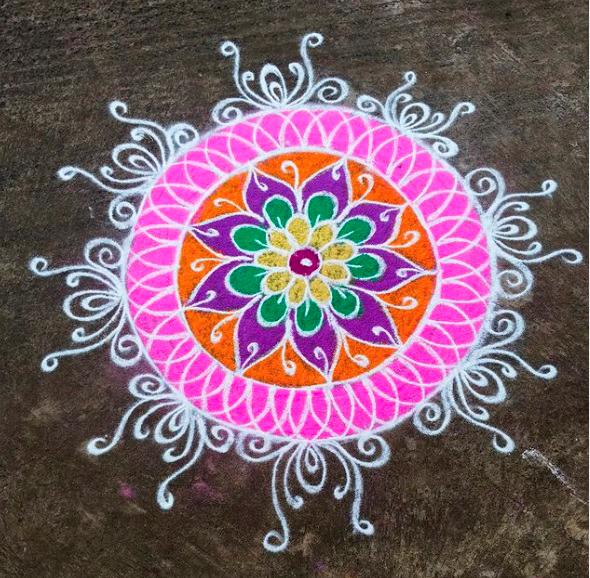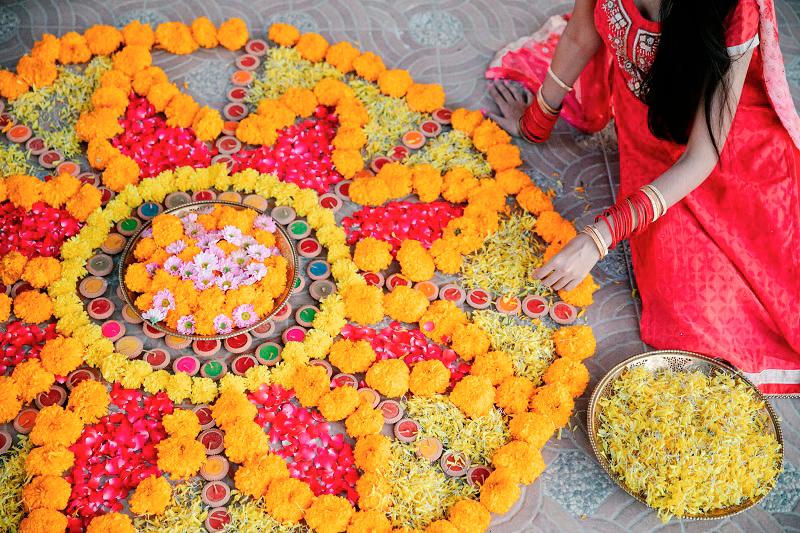DEEPAVALI, also known as Diwali (in Hindi), is a joyful festival celebrated by the Hindu community.
The special day falls on the Karthigai month in the Tamil calendar, which is between October and November in the Gregorian calendar.
The Festival of Lights, which is next Thursday, commemorates the triumph of good over evil when Lord Krishna defeated the demon king Naragasura or Narakasura.
These are some of the oft-seen decorative items that adorn homes during this celebration and their significance.
Oil-filled lamps
The night is lit up to celebrate Lord Krishna’s victory with the glow of oil-filled clay lamps with cotton wicks. Lighting also represents good triumphing over evil as darkness is broken by the light.
Rows of oil lamps are lit up to celebrate Lord Krishna’s victory. In fact, the word Deepavali is a coined term of the words deepam (oil lamp) and avali (rows).
In northern India, Deepavali is observed to mark Lord Ram’s return after a 14-year of exile in the forest. Along the path, oil lamps or diyas, in Hindi, were lit to welcome Ram’s return to Ayodhya, the capital of his kingdom.
On Deepavali day, Hindus also offer prayers to Goddess of Wealth Lakshmi. Oil lamps are placed outside of the house to welcome the goddess and her blessings for the household.
Thus, oil lamps hold deep symbolic meaning and are a must-have decorative item for any Hindu household. Besides, the glow of the lamp denotes enlightenment.
In the past, people used plain clays but these days the clays are aesthetically beautiful with colours, designs and shapes. Floral patterns, curvy lines and dotted lines add a touch of elegance.
Fragrance of flora
Apart from being auspicious and bringing positive energy into homes, fresh and fragrant flowers also have a cultural and religious significance for Indian people.
Flowers are offered to every Hindu deities and used to decorate shrines. Different blossoms are offered to different deities and each represents a different meaning. Flowers are also used in every celebration, from weddings to festivals and funerals. Of course, this makes them integral when decorating homes for Deepavali.
During Deepavali, flower garlands are placed on the deities in the home altar. Jasmine, roses and marigold garlands are most popular. Roses symbolise love and divinity. Aside from beauty, jasmine flower evokes a sweet, captivating scent. Marigolds are auspicious and lotus is a symbol of purity, enlightenment and divine beauty, which is also preferred for garlands.
A traditional urli (pot), a decorative centrepiece, is placed in some houses to welcome guests. The wide brass pot or bowl, filled with water and floating roses or rose petals, is placed at the entrance.
Besides fragrance from the flowers and positive energy, Urli vessels create a serene ambiance. An aesthetically beautiful decorative item to have in the house.
Traditional art
Kolam, the traditional decorative art drawn on the floor of the main entrance using grounded rice flour, has intricate and complex designs that originated centuries ago.
Pulli kolam or dotted kolam drawn by the Tamil community has dotted lines, loops, straight lines, curved lines, interlinked circles, triangles and squares with a balanced symmetry.
Pulli kolam begins with a dot and each design has meanings. These type of kolam are drawn to welcome the divine. There are also floral kolam that has unique designs with curvy lines and some variations use colourful powders.
Rangoli is an elaborate variation of kolam, decked with patterns of flowers, fruits and peacock designs with a splash of colours also made with dyed rice grains. To add a touch of grandeur, rangolis are decorated with flower petals and decorative brass oil lamps.

Auspicious mango thoranam
Maavilai thoranam are made of 21 mango leaves, which are considered auspicious. Mango leaves are significant to Indian households due to availability and abundance of mango trees in India.
In the Hindu beliefs, mango leaves fend off negative energy from entering the house and as such, the leaves are tied to a string and hung above the doorway entrance.
Homes are often adorned with colourful flower thoranam or hanging garlands with yellow and orange marigold flowers tied on a string and adorned on the walls, outside and inside of the house.
Indian homes during Deepavali are a reflection of the community’s bond with its culture and tradition. As we celebrate Deepavali, it is also important to be mindful about the significance that this festival holds for the Indian community and culture.









